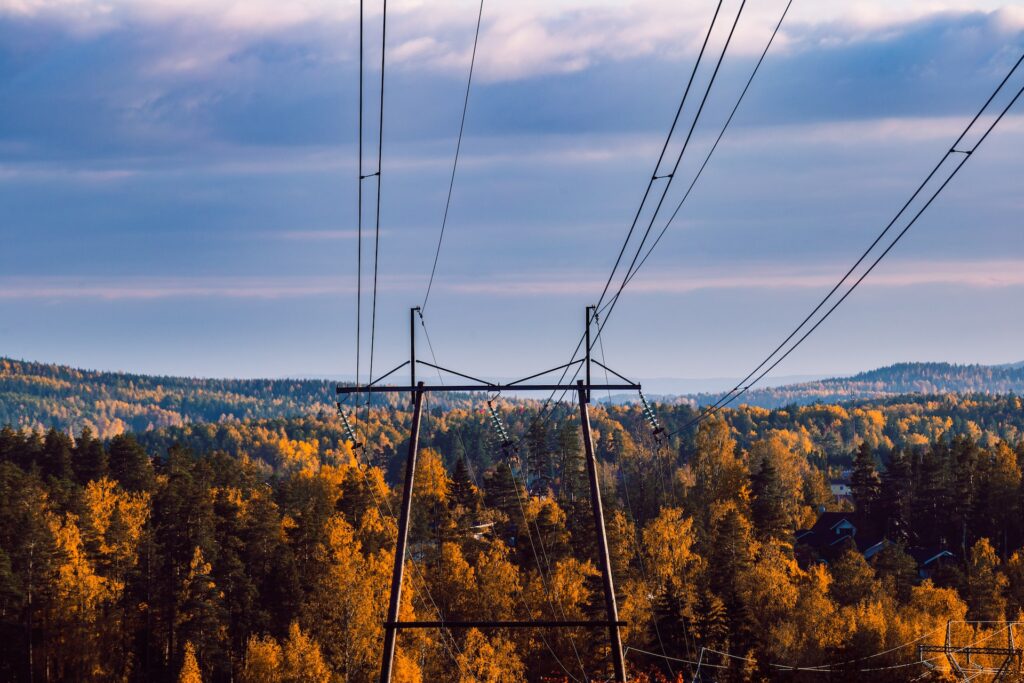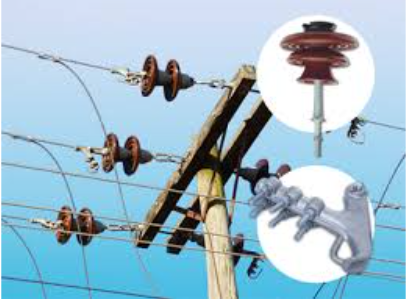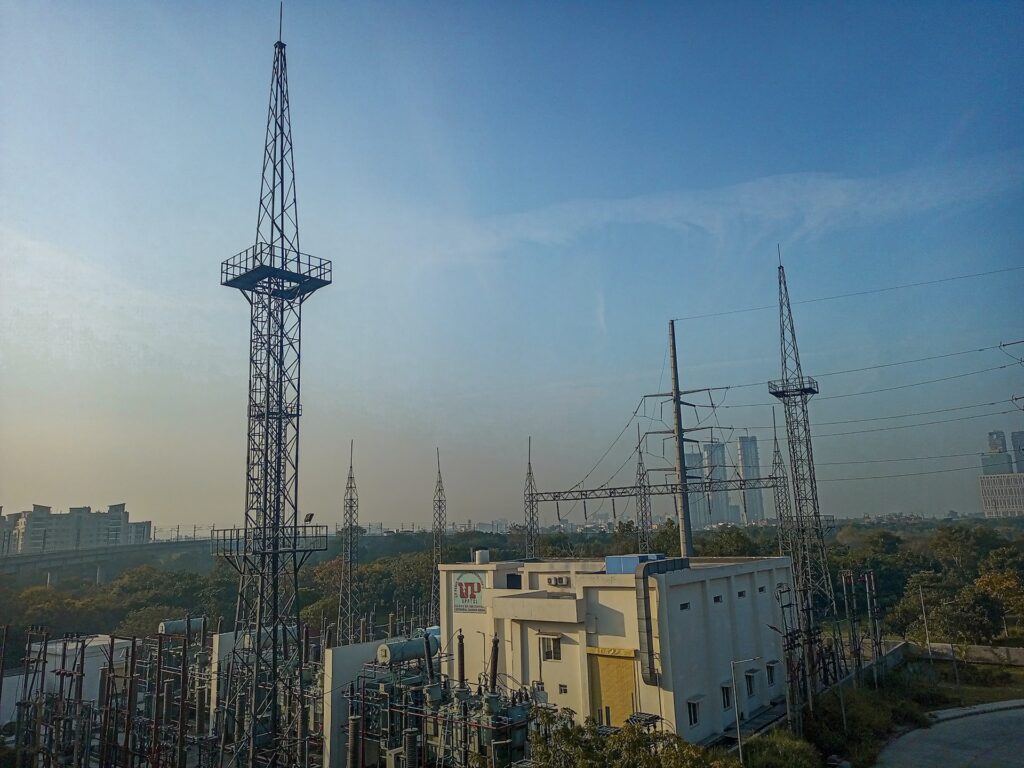- Dead end clamps are one kind of power line hardware used on the transmission and distribution power lines to protect the conductors and the cables from damages and vibrations caused by strong winds.
- Dead end clamps are made from materials that help the to resist corrosion and abrasion which prolong the service life of the conductors and cables on the transmission lines.
- There are five different components of Dead end clamp including wedge and body, washers, straps,threaded inserts as well as bolts and nuts.
Deadend clamp serves as a temporary fixture to hold wires or conductors securely in right place. It meet your power and utility needs and play an important role in power transmission and distribution. In Electrical field, Dead end clamps can be used to secure and stable the conductors and cables from falling down thus ensure the electrical current can go flow smoothly through transmission lines and to households.
In the following article, we are going to show you the ultimate buying guide of how to choose dead end clamp. We will talk about the definition, components, characteristics, types and how to choose your supplier of dead end clamp.
Table of Contents
- The definition of dead end clamp
- The components of dead end clamp
- Characteristics of the dead end clamps
- Types of dead end clamps
- Factors to consider when buying the dead end clamps
- Why you should choose TTF Electric Power Technology Co., Ltd be your partner of dead end clamps?
- FAQs
The definition of dead end clamp

Dead end clamp is a device that consist of several parts that are used for dismissing conductors at different points in the transmission lines. They are also used to protect the conductors and the cables from damages caused by swinging and vibrations brought by strong winds. It is also used to provide mechanical and electrical connections to the insulator which is connected around the insulator. The major types of dead end clamps used in the transmission and distribution lines include overhead aluminum alloy dead end clamp, overhead insulated dead end clamp and NLL aluminum alloy dead end clamp. Other dead end clamps include plastic dead end clamps, PAL metal tension clamps and metal tension clamps.
The components of dead end clamp
The dead end clamp may appear a single unit but it is actually composed of different components that ensure the efficiency of the device. These components are as discussed below.
- The wedge and body — this is the main part of the dead end clamp that supports the conductors of the transmission lines.
- Washers — this part is next to the body and its function is to protect the exterior of the conductor when the bolt is tightened.
- Straps — the straps are responsible for the relocating of the load from the axis of fluctuation to the insulator ring.
- Threaded inserts — these parts are also known as the threaded bushing that are used to protect the conductors from vibrations. They also help to fasten the object by adding a threaded hole in an object.
- Bolts and nuts — these helps to complete the connections of one or more components on the overhead transmission lines. They ensure that all connections are secured and prevent loose connections which may lead to electric shocks.
Characteristics of the dead end clamps

- The mechanical and grip strength of the tension clamp is high.
- It should have simple installation and construction aspect.
- It should be installed with anti-theft device to avoid theft.
- The material used to make the device should be resistant to all weather conditions.
- The materials should be able to resist the corrosion properties.
- The device should be shock resistant to prolong the service life of the wire.
Types of dead end clamps
The following types of dead end clamps are the commonly used clamps in the transmission and distribution systems. These include overhead aluminum alloy dead end clamps, overhead insulated plastic dead end clamps and NLL aluminum alloy dead end clamps. Other include plastic dead end clamp, PAL metal tension clamp and metal tension clamps.
Overhead aluminum alloy dead end clamp
This type of tension clamp is used to fasten and fix LV-ABC cables with insulated neutral messengers. They are suitable for weather conditions and can be used without tooling.
Structural Features
- The body should be made of aluminum alloy.
- The fixtures are made of UV-resistant artificial material for areas with high temperatures.
- It should have a stainless steel flexible connection cable that is armed with a density resistant, insulated and removable saddle.
- The neutral messenger should be fixed with insulation to prevent damage.
Overhead insulated plastic dead end clamp
These are used to suspend deserted cables with insulated impartial wires. It is suitable for connections of insulated cables.
Structural features
- It is characterized by simple and reliable installation which can be directly mounted on the insulation layer.
- The tension clip is made of high-tensile strength aluminum alloy molding which is resistant to oxidation and does not loose electrical energy.
- It does not break easily during a high operating frequency.
- During installation the body should be far down and the wire should be pulled up to the right position.
Overhead insulated plastic dead end clamp
This is used to fix aluminum stranded wire or steel core aluminum stranded wire. It is used to support the use between the overhead insulated aluminum wire and the insulation cover which takes the role of insulation protection.
Structural features
- It is resistant to different weather conditions and has continuous clamping force.
- It has a high overload volume.
- It has a good thermal steering performance.
- It is made of good material that is resistant to corrosion and oxidation.
Factors to consider when buying the dead end clamps
The market can be a huge place to choose from when planning to purchase dead end clamps for your overhead installations. However, there are many factors that may help when selecting the types of clamp to use for your installations and they are as discussed below.
· The mechanical strength of the clamp should be great to help in transferring the overhead load.
· The clamp should be simple and easy to install.
· The material used to make the clamp should be able to resist the different weather conditions such as high temperatures and storms.
· They should also be made from galvanized steel to help in resisting corrosion and rust to help to prolong the serviceable life of the devices.
· The devices should be able to resist electric shocks to protect the people living or working around the connections.
· The manufacturer of the dead end clamp should also be considered to help when purchasing. The manufacturer should be in the industry for a long time and should be referred by other clients who have prior purchased the devices.
Why you should choose TTF Electric Power Technology Co., Ltd be your partner of dead end clamps?
TTF Electric Power Technology Co., Ltd possesses a wide range of products including power line hardware, power line fittings, pole line hardware. In addition, Our team of engineers proactively communicate with you to better understand your instructions. That way, we are able to resolve potential technical issues prior to production.
Our OEM/ODM services create custom-made products based on specific power utility requirements from you.
At our factory, we carefully inspect raw material from all sources, making sure that the quality of final product is strictly in line with any manufacturing standards of your choice.
We collaborate only with reputable galvanizing mills to ensure quality. By doing so, the coating on all products are both smooth and constant in thickness.
In order to make your delivery on time, we operate a network of warehouse across continents. We also provide frequent updates about the status of your order with videos and photographs.
FAQs
What is a dead end clamp?
A dead end clamp is a device that is used on the overhead transmission lines to protect the conductors and the cables by insulating the areas.
What are the parts of the dead end clamp?
The main components of the dead end clamp include the wedge and body, washers, straps, threaded inserts, bolts and nuts.
What are the function of the dead end clamp?
The main function of the dead end clamp is to provide electric passage, protect the conductors and to provide mechanical connection.
